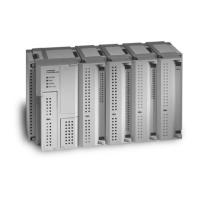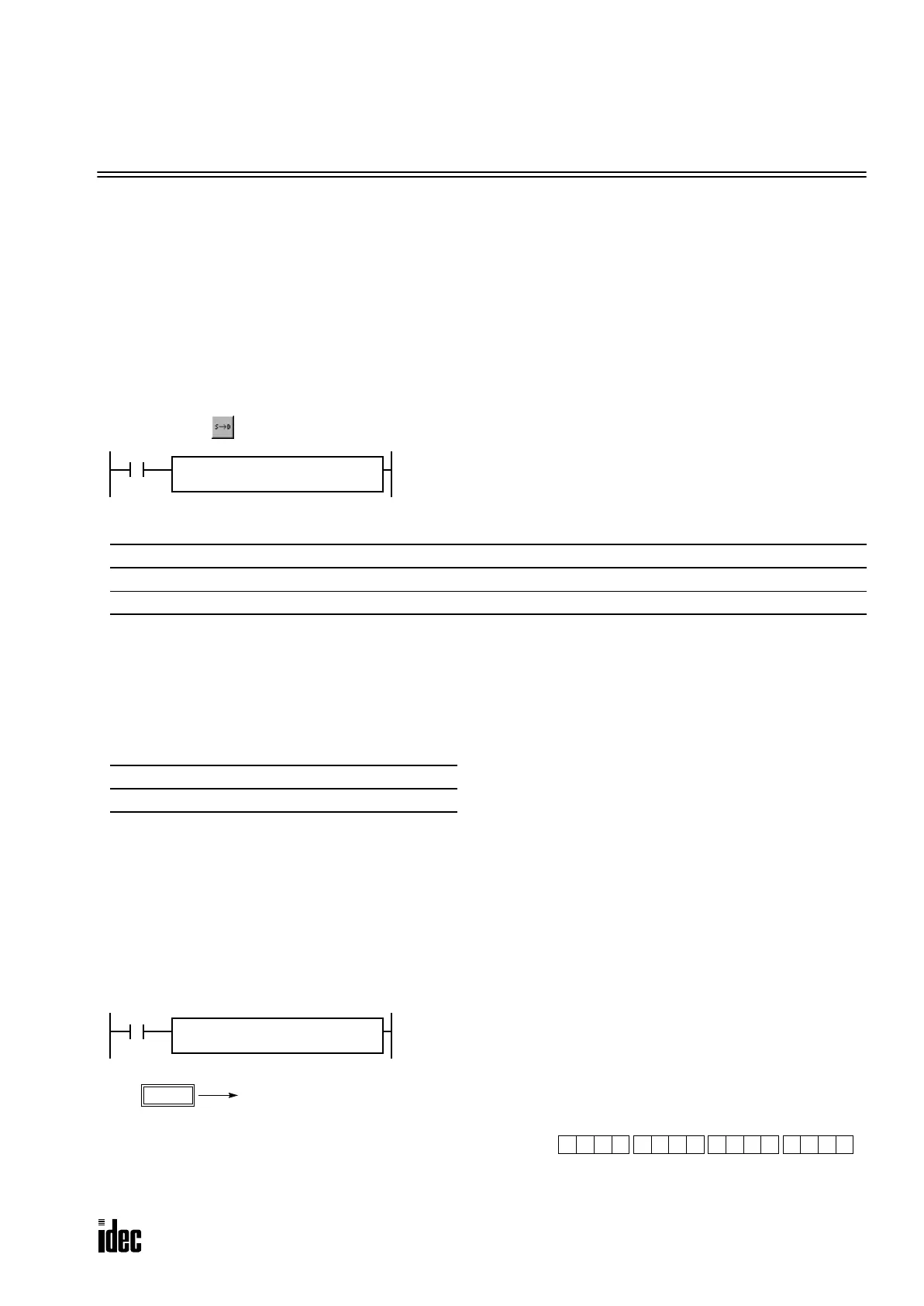OPENNET CONTROLLER USER’S MANUAL 9-1
9: MOVE INSTRUCTIONS
Introduction
Data can be moved using the MOV (move), MOVN (move not), IMOV (indirect move), or IMOVN (indirect move not)
instruction. The moved data is 16- or 32-bit data, and the repeat operation can also be used to increase the quantity of data
moved. In the MOV or MOVN instruction, the source and destination operand are designated by S1 and D1 directly. In the
IMOV or IMOVN instruction, the source and destination operand are determined by the offset values designated by S2 and
D2 added to source operand S1 and destination operand D1.
Since the move instructions are executed in each scan while input is on, a pulse input from a SOTU or SOTD instruction
should be used as required.
MOV (Move)
Valid Operands
For the valid operand number range, see page 6-2.
▲ Internal relays M0 through M2557 can be designated as D1. Special internal relays cannot be designated as D1.
Source operand can be both internal relays M0 through M2557 and special internal relays M8000 through M8237.
When T (timer) or C (counter) is used as S1, the timer/counter current value is read out. When T (timer) or C (counter) is
used as D1, the data is written in as a preset value which can be 0 through 65535.
Valid Data Types
When a bit operand such as I (input), Q (output), M (internal relay), or R (shift register) is designated as the source or des-
tination, 16 points (word or integer data type) or 32 points (double-word or long data type) are used. When repeat is desig-
nated for a bit operand, the quantity of operand bits increases in 16- or 32-point increments.
When a word operand such as T (timer), C (counter), D (data register), or L (link register) is designated as the source or
destination, 1 point (word or integer data type) or 2 points (double-word or long data type) are used. When repeat is desig-
nated for a word operand, the quantity of operand words increases in 1- or 2-point increments.
Examples: MOV
Data Type: Word
Operand Function I Q M R T C D L Constant Repeat
S1 (Source 1) First operand number to move XXXXXXXX X 1-99
D1 (Destination 1) First operand number to move to — X ▲ XXXXX — 1-99
W (word) I (integer) D (double word) L (long)
XX X X
S1 → D1
When input is on, 16- or 32-bit data from operand designated by S1 is
moved to operand designated by D1.
REP
**
S1(R)
*****
D1(R)
*****
MOV(*)
I2
REP
D10 → M0
When input I2 is on, the data in data register D10 designated by source
operand S1 is moved to 16 internal relays starting with M0 designated by
destination operand D1.
12345
D10
S1 –
D10
D1 –
M0
M0 through M7, M10 through M17
The data in the source data register is converted into 16-bit binary
data, and the ON/OFF statuses of the 16 bits are moved to internal
relays M0 through M7 and M10 through M17. M0 is the LSB (least
significant bit). M17 is the MSB (most significant bit).
MOV(W)
0 1 0010 0 0 0 1 0010 1 1
MSB
M0
LSB
M17 M7M10
Phone: 800.894.0412 - Fax: 888.723.4773 - Web: www.clrwtr.com - Email: info@clrwtr.com

